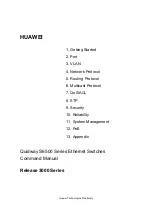
AT88SCK109STK3
3-8
AT88CK109STK3 User Guide
8699A—CRYPTO—10/09
3.4
AT90USB1287 AVR Microcontroller
To use the USB interface of the AT90USB1287, the clock source should always be a crystal or an
external clock oscillator (the internal 8MHz RC oscillator cannot be used to operate the USB
interface). Only the following crystal frequencies allow proper USB operations: 2MHz, 4MHz,
6MHz, 8MHz, 12MHz, and 16MHz. The AT88Microbase comes with a default 16MHz crystal
oscillator, which is required to obtain the 230.4K USART baud rate needed for
CryptoAuthentication communication.
3.5
Serial Links
3.5.1
USB
The AT88Microbase is supplied with a standard USB Type-A receptacle. The AT88Microbase only
operates as an “USB device”.
Figure 6.
USB Type-A Receptacle
3.5.2
USART
The AT90USB1287 AVR comes with an on-chip USART peripheral (USART1). Only the
asynchronous mode is supported. See section 3.6.3 for pinout details.
3.5.3
SPI / TWI Selector Switch
The SPI – TWI selector switch (K1) allows either the SPI pins (MOSI and SCLK) or the TWI pins
(SDA and SCL) to be routed to the 10 pin Interface header, J1. See section 3.6.3 for pinout details.
Figure 7.
TWI – SPI Selector Switch
Summary of Contents for AT88CK109STK3
Page 1: ...AT88CK109STK3 Hardware User Guide 8557B CRYPTO 04 09 ...
Page 26: ...Figure 2 AT88Microbase Schematic 2 of 4 ...
Page 28: ...Figure 4 AT88Microbase Schematic 4 of 4 ...
Page 30: ...Figure 6 AT88Microbase Assembly Drawing 2 of 2 Bottom side ...
Page 32: ...Figure 7 AT88CK109BK3 Schematic 1 of 3 ...
Page 34: ...Figure 9 AT88CK109BK3 Schematic 3 of 3 ...
Page 36: ...Figure 10 AT88CK109BK3 Assembly Drawing 2 of 2 Bottom side ...











































